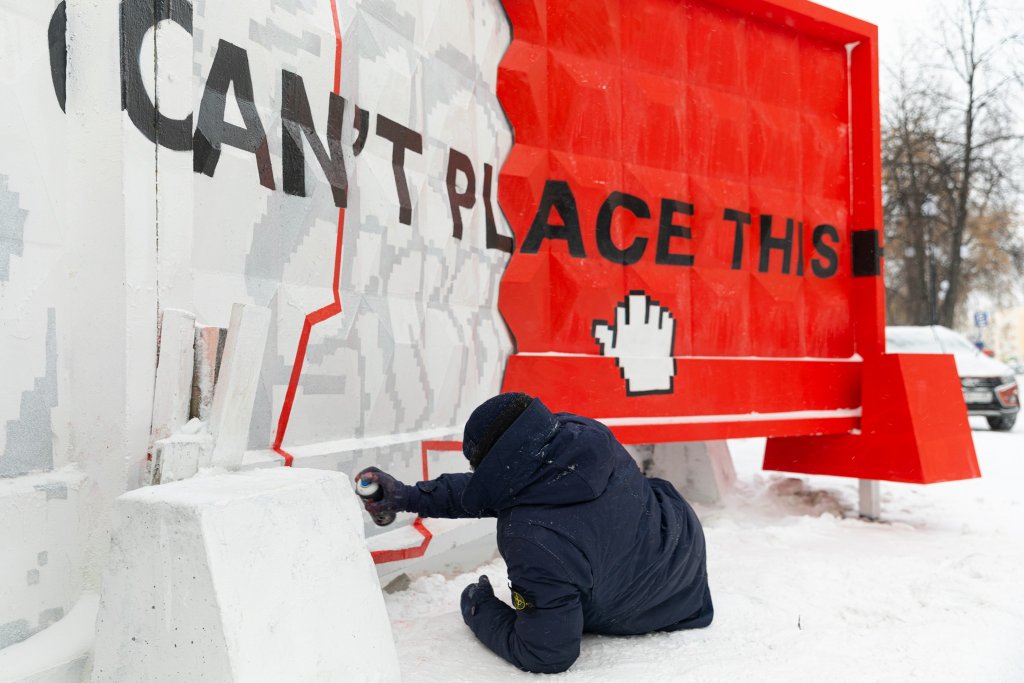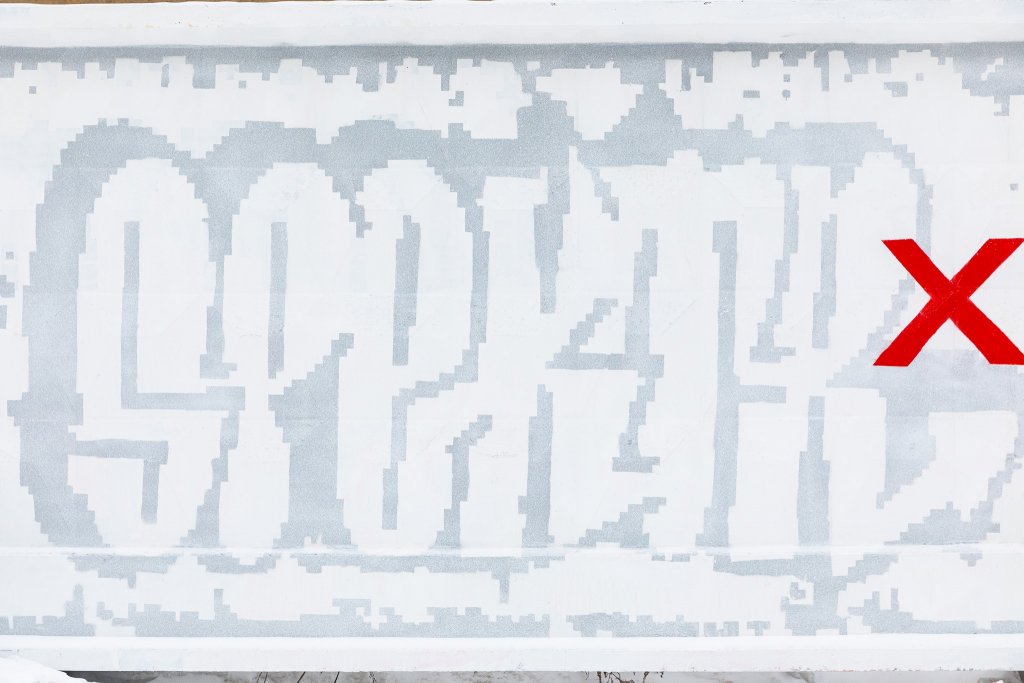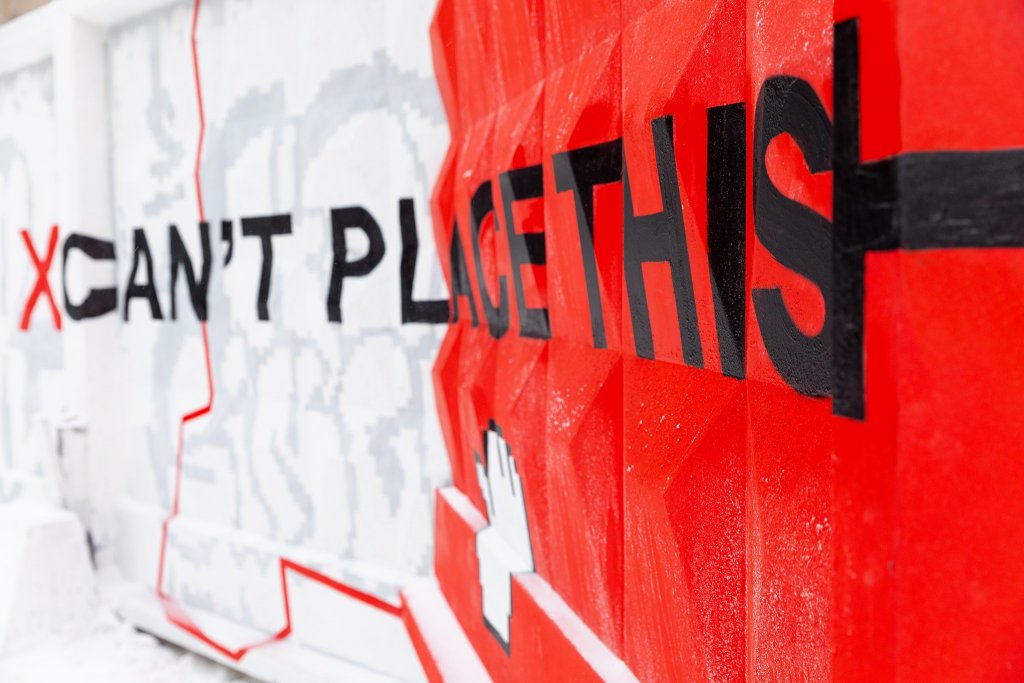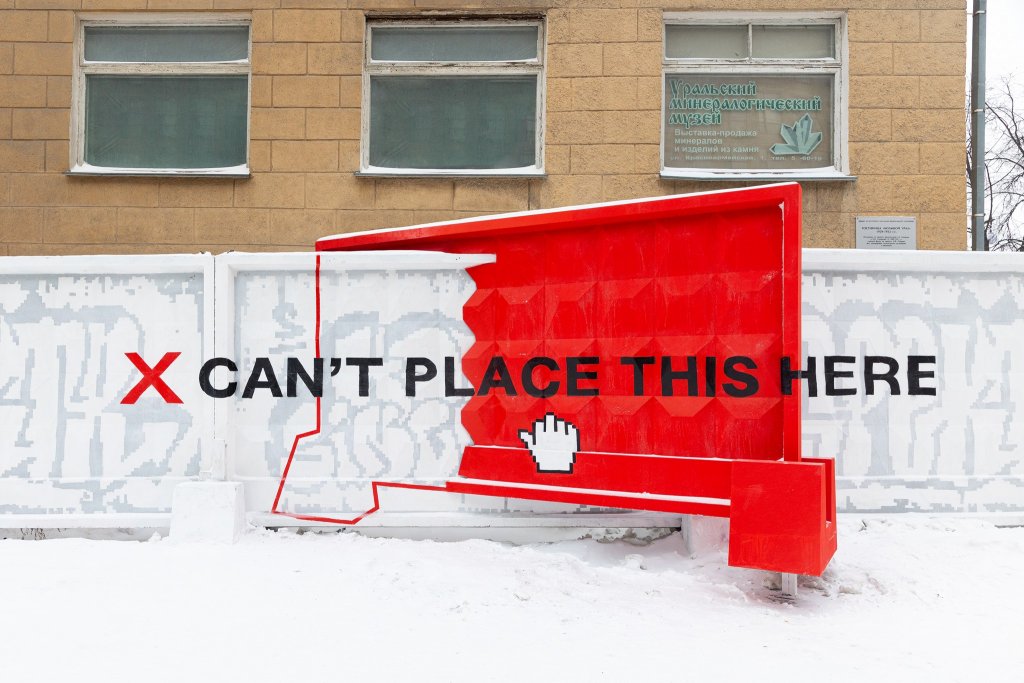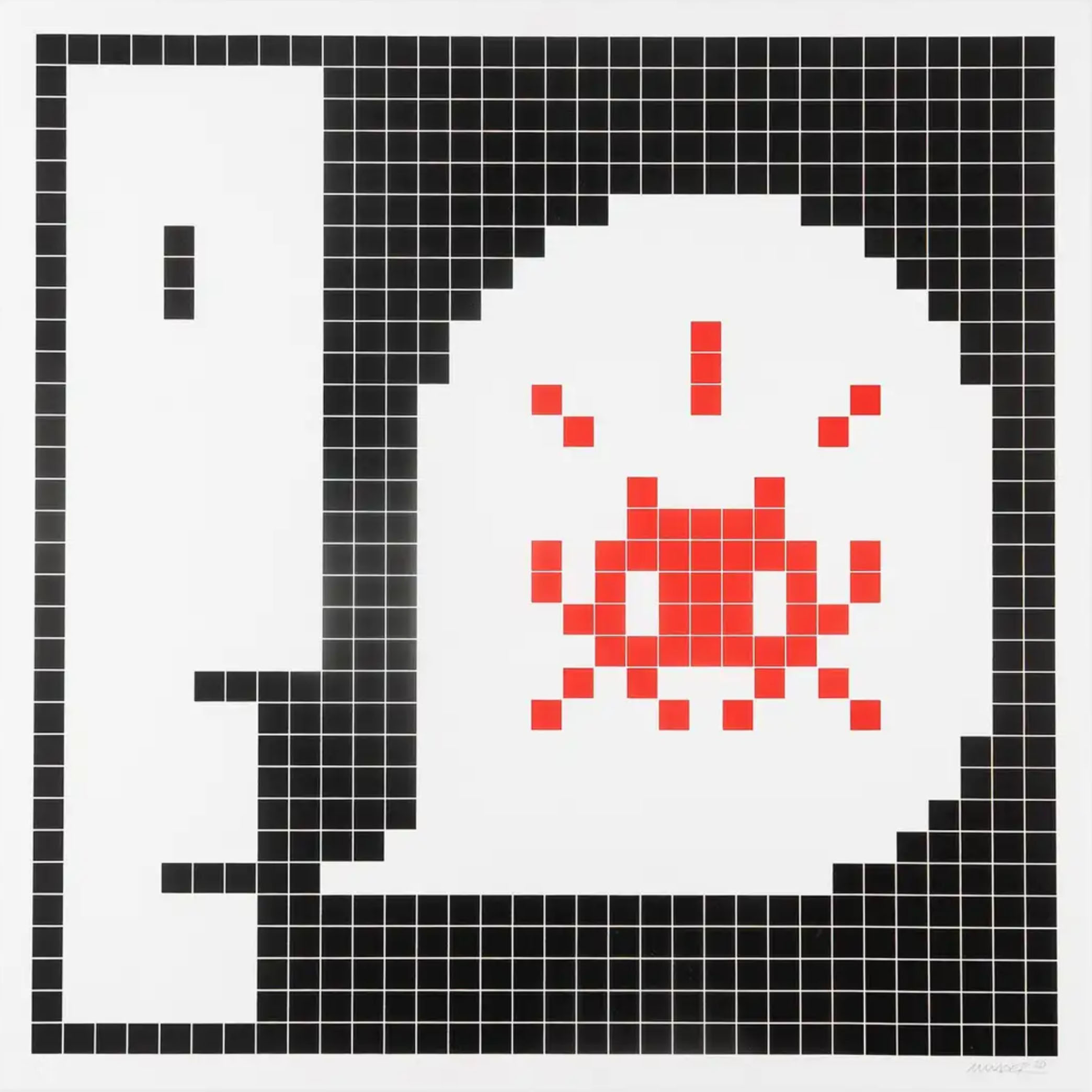A highly unusual piece of art has made its appearance at the CHÖ Public Art Festival. The piece is an architectural intervention: two iconic Soviet concrete fence panels (known as PO-2) intersect each other.
The artwork transfers the concept of ‘structural overlap’ from the world of video games to reality as a comment on the city’s excessive fencing. This is a collaboration between two artistic collectives, SPEKTR and Hot Singles.
Street artists have created an ironic architectural intervention that hacks into the urban environment. A PO-2 fence panel is stuck in textures of a real concrete barrier and stands as a metaphor for the city’s excessive fencing. “A fence is a symbol of division. A line between “us” and “them”, between “inside” and “outside”. This is why we think it’s strange to see so many barriers dividing our public spaces”, the artists explain. According to the Kommersant newspaper, more than 2.5 million kilometres of barriers had been erected across Russia in the past 25 years.
The video game-like syntax of the piece leaves passers-by feeling as if they are inside a city-building simulator.
“There’s a feature you get in some games, like strategies and city-builders (Stronghold, Warcraft, SimCity, etc.) called ‘structural overlap.’ It happens when you’re in building mode, and try to place one structure on top of another. When this happens, the structure you want to place lights up red, and the game tells you: ‘Can’t place this here’. Our ‘fence in a fence’ is a statement: there are enough barriers in the city already, and no need for more. Now more than ever, we need to be united, not divided. We should be building bridges, not barriers.” Andrey Kolokolov
The piece is based on a distinct visual concept. Though the idea itself may be simple, making fences intersect is a tricky business: the panels need to look like they’ve come together accidentally but be aesthetically pleasing at the same time.
The SPEKTR and Hot Singles artists meticulously modelled and calculated how the two 3D objects needed to intersect to make the illusion that viewers are in a video game totally convincing. Repeating pixelated graffiti on the panels also contribute to this effect, making the texture tiled.
